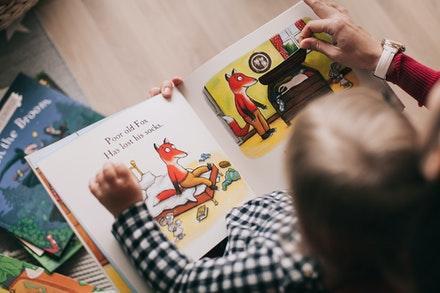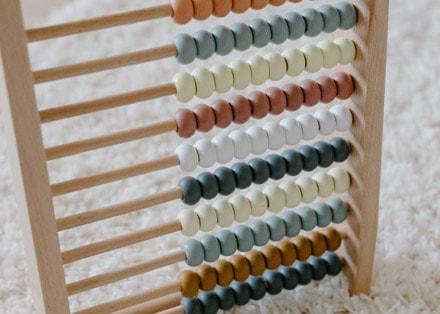ABA stands for Applied Behaviour Analysis, it is the application of the science of learning, with the aim to increase socially significant and age appropriate behaviours, and decrease behaviours of concern.
- Is ABA a Therapy?
- Is ABA helpful for Autism and Global Developmental Delay?
- Who Created Applied Behavior Analysis?
- Is Applied Behaviour Analysis the Same as Behaviourism?
- How Effective Is ABA?
- Why Do We Want to Get in Early?
- Why Do We Want Intense Hours?
- How Long Is an ABA Session?
- What Are Some ABA Examples?
- What are some ABA Strategies for Parents?
- Why Is a Mobile Service Effective?
- Why Is It Beneficial to Have a Number of Technicians on the Team?
- Does My Child Need ABA Treatment If They Only Have Mild ASD?
Is ABA a Therapy?
Applied Behaviour Analysis is not a therapy in itself, rather an approach to understanding what factors influence a person’s behaviour.
ABA based therapy applies the principles of Applied Behaviour Analysis to increase socially significant behaviours and decrease behaviours of concern (e.g., behaviours that are presenting as barriers to the child learning from their environment) for children with developmental disabilities.
Key things to note:
- ABA is the application of a wide range of teaching strategies in order to teach a child new skills
- Different strategies will be used to teach different skills
- The strategies used for one child to teach one skills, may differ from the strategies used to teach another child the same skill – it depends on the child and how they learn best
Is ABA helpful for Autism and Global Developmental Delay?
ABA based therapy is an established and evidence-based therapy, which is effective in helping children with Autism and other developmental delays to reach their goals.
ABA has been extensively researched for over 50 years, and that research has shown us that ABA based therapy is effective in teaching children new skills and reducing behaviours that are negatively impacting the child’s life.

There are many therapies available that claim to help reduce the characteristics of, or ‘cure’ Autism Spectrum Disorders (ASD).
At present, there is no known ‘cure’ for ASD. Engaging your child in any therapy that boasts these claims may be risky, as we do not know their outcomes and the effects they may have on children.
At Mosaic Early Intervention, our programs are neurodirversity-affirming, our aim is to teach children new skills that will help them learn from others and their environment, and only reduce behaviours that are causing them harm or negatively impacting their life.
ABA based therapy is best practice for children with ASD and when implemented ethically and appropriately with an emphasis on compassionate care, safety and trauma informed. It is highly effective for increasing adaptive behaviours and decreasing harmful behaviours in children with ASD.
Who Created Applied Behaviour Analysis?
The origins of ABA can be seen as far back as the 1950s from various researchers that contributed to the Journal of the Experimental Analysis of Behavior (1958), established by B.F Skinner and Charles Ferster.
It was not until the 1970s that ABA for young children with ASD was fully investigated by psychologist Ivar Lovaas at UCLA, who found that the principles of ABA could be used to help children with Autism learn new adaptive behaviours.
Since then, ABA as a treatment for ASD has been extensively researched, the field has progressed vastly and continues to progress today.
Is Applied Behaviour Analysis the Same as Behaviourism?
In short, no. Behaviourism is the theoretical study of behaviour, which finds that all human behaviour is influenced by the environment through a process called operant conditioning.
ABA on the other hand looks at the functional relationship between a behaviour and the environment and aims to only increase socially significant behaviours and decrease behaviours that are interfering negatively with the person’s life, by changing the environmental variables that influence that behaviour.
How Effective Is ABA?
When implemented in the early years and with intensity (e.g., minimum of 20 hours of therapy per week) ABA therapy has been proven to be extremely effective.
Why Do We Want to Get in Early?
- By starting ABA therapy early on in a child’s life, we can intervene before mild challenging behaviours have escalated to more severe challenging behaviours.
- When children are younger, the gap between them and their peers is less, as there are less milestones they would have missed.
- If we ‘wait and see’, we run the risk of our children falling further behind, and missing more milestones, making it take longer and more difficult for them to catch them up.
- Furthermore, as the children continue to miss milestones, and their struggles increase, we may also see challenging behaviour increase.
Why So Many Hours?
Although 20 hours per week may sound like a lot, we like to think of it as sending our children to school earlier than usual, however, this school focuses on teaching them “learning to learn” skills and reducing barriers that may be in the way of them learning when they go to ‘big’ school.
ABA today is not like what you see in the videos. It is not repetitive flashcards at the table and rigid, inflexible therapy sessions (although, this misconception still exists!).
ABA today is play-based and fun, flexible and aims to teach children skills, right from the start, in a generalised way. Of course, some children need skills to broken down and a bit clearer to begin with, but generalisation is a key component of any program, and is always considered in their program.
The application of ABA today should always prioritise the individual needs of each child and ensure that they are happy, relaxed and engaged throughout therapy sessions. Safety should be at the forefront of the delivery of programs. Children should enjoy the learning process, show a willingness to participate in each and every session and build a positive and wholesome relationship with the therapists working with them.

The hours are not just delivered in the therapy room, alone with the child and therapist. The hours are spread amongst the home, preschool/daycare and within the community. Parents are also included in therapy sessions, in order to help them gain the skills to help their children meet their goals.
It is important that our children are spending the majority of the day engaging in appropriate and functional activities. The more they do, the more they will do.
If a child is spending their day disengaged from people and things around them, and using challenging behaviour to communicate, they are likely to become even more disengaged and their challenging behaviour and frustration is likely to increase.
If a child is engaged with others and is communicating with others in appropriate and effective ways, their engagement and appropriate communication is likely to increase.
How Long Is an ABA Session?
The length of a session depends on the child, however if we look at a 20 hours per week program running Monday – Friday it might look something like this:
- 2 x 2hr sessions per day – one in the morning and another in the afternoon
- Some children do 6 hours per day, this could look like 2 hours in the morning, 2 hours in the middle of day and 2 hours in the afternoon; or 3 hours in the morning and 3 hours in the afternoon.
- Different technicians will run each session (find out why below)
You might ask, isn’t that too long for a child to be in therapy? However, lots of breaks are incorporated throughout, and we can even find opportunities for learning during these breaks. It really depends on the child!
Activities could include playing a board game together (still following instructions and taking turns) or going outside and throwing a ball, jumping on a trampoline (working on motor skills) and so on.
Typically the weekly timetable is consistent, however this is flexible and we can make adjustments as needed.
What Are Some ABA Examples?
These are some examples of the areas that ABA may cover:
- Identifying the child’s strengths (where their skills currently are) and weaker areas (skill deficits and barriers to learning)
- Setting individualised goals with an emphasis on functional outcomes (e.g., increasing communication, social, imitation, play and matching skills. Decreasing challenging behaviours such as crying when wanting access to a preferred item that is not currently available)
- Developing an individualised program aimed to increase skills and decrease barriers
- Implementing the individualised program and recording data so that progress and effectiveness of the current strategies to teach that skill can be monitored
- Making changes in the child’s program if needed. There is no skill that cannot be taught, if a child is not learning something, we will change the strategy we are using to teach that skill
- Creating fun and enjoyable therapy sessions for the child, finding the things that the child loves to do and using these to motivate them to learn new skills that will improve their quality of life, engage with others and independently access a wider range of environments
- Delivering therapy sessions at home, education and community settings
- Supporting parents, other family members, educators, teachers and anyone else who is involved in the child’s life, so that everyone can help the child reach their goals
Various skills are worked on within the child’s ABA program, skills targeted span across all developmental domains.
ABA sessions should be flexible and fun! Skills are taught at the table, on the floor, outside, inside and so on. An ABA program is not sitting at the table running repetitive trials of the same skill, using flashcards and without generalisation and variety.
What are some ABA Strategies for Parents?
Some strategies that parents can adopt to guide their child’s learning, include:
- Modelling behaviour / role-play
- Positive reinforcement and guidance
- Learning skills e.g: picture cards
- Prompting
- Assisting child to complete a task
- Receive ongoing support from their team to implement strategies at home
By providing in-person training, advice and support parents are fully involved throughout the process. This allows them and their children to gain even more successful outcomes.

Why Is a Mobile Service Effective?
A mobile service is best, as it allows the early intervention team to work with children in their natural environment. If they were taught solely in the clinic, the children might not be able to apply these skills in different surroundings and may require additional generalisation lessons to acquire them.
We have learned from experience, that the skills and preferred behaviours are more likely to persist when a child learns across a variety of settings, from home to the classroom. A mobile service makes sure that their skills are taught in all environments and that the child has the best opportunity to grow and learn.
In the classroom, the ABA consultant can work closely with educators and teachers to increase the success of students learning and development and to reduce behavioural barriers in the classroom.

At home, the consultant works with the primary carers and other key people in the child’s life to enhance positive behaviours and learning skills.
Why Is It Beneficial to Have a Number of Behaviour Technicians on the Team?
It is beneficial to have a number of behaviour technicians to generalise new skills among different people and to keep it fun and interesting for our kids.
Providing the child with the ability to learn from a range of people:
- Adds variety
- Improves social skills
- Can offer different ideas and approaches
- Allows generalisation of skills across different people
Does My Child Need ABA Treatment If They Only Have Mild ASD?
Yes, we don’t want to run the risk of the child falling too far behind, and they may only need to engage in ABA therapy for a short time.
Where there are few skill deficits or barriers, ABA therapy will aim to help catch them up so that their developmental milestones are in line with their same aged peers.

In summary, ABA or Applied Behaviour Analysis is a science of learning that allows us to teach a child a range of skills across various domains, decrease behaviors of concern and improve age appropriate social interactions.
It is intensive, effective and therapy sessions are conducted across a range of environments and with different technicians for optimal results.
Related content: ABA in Sydney

